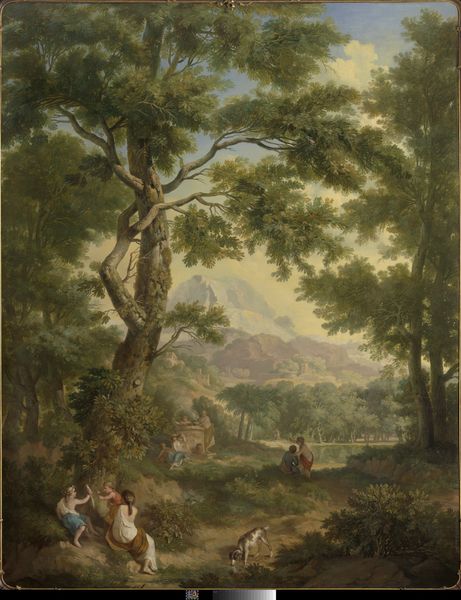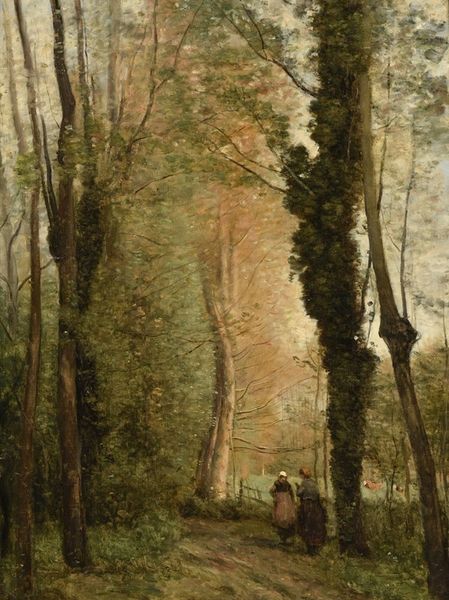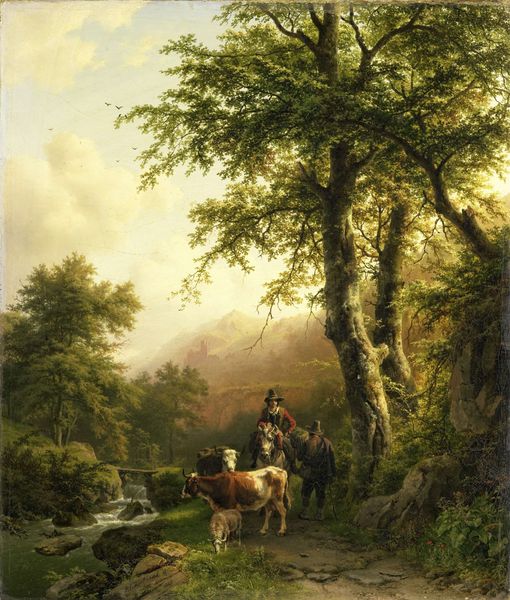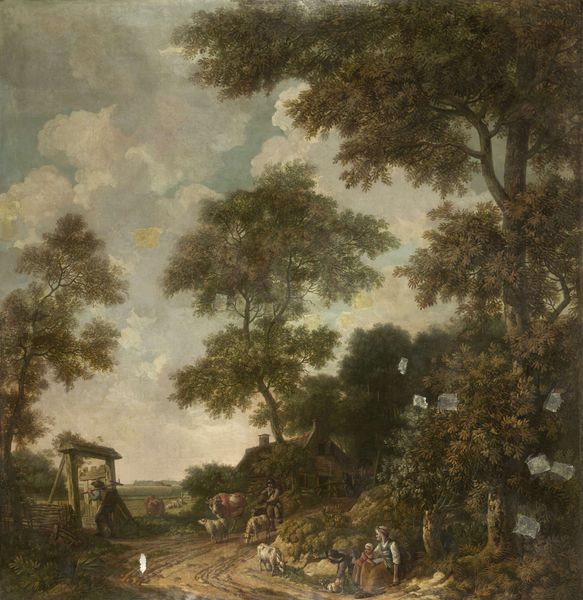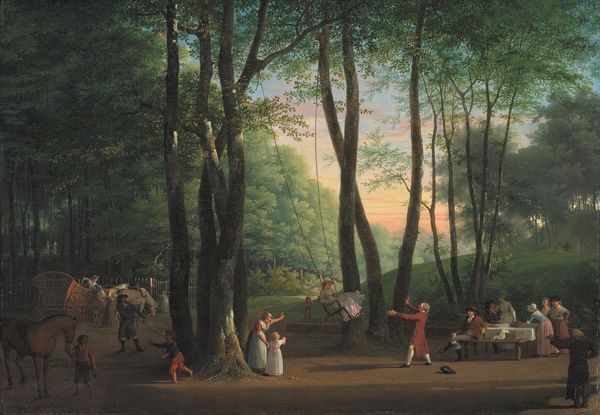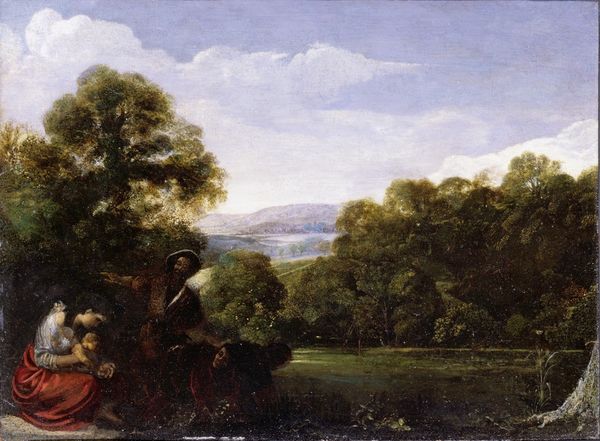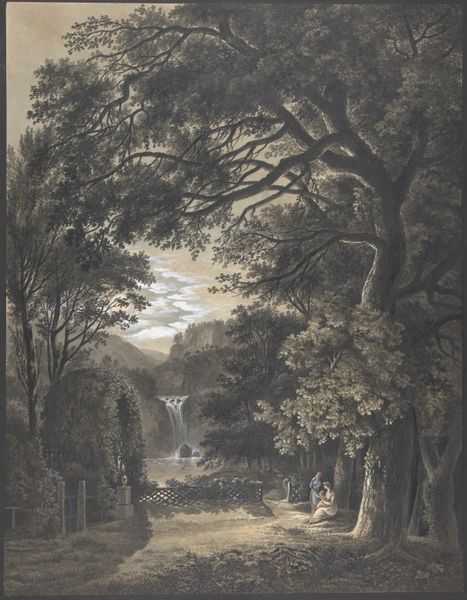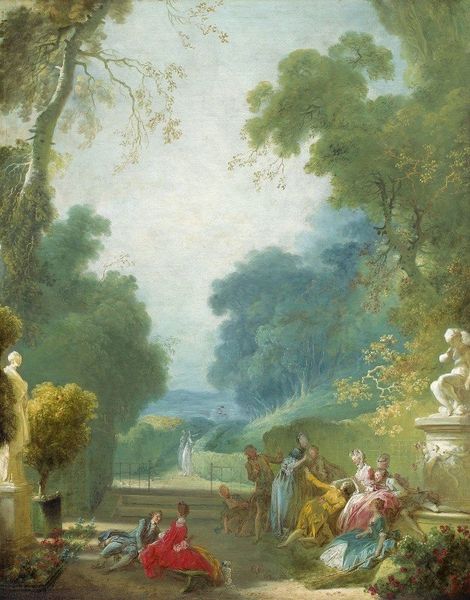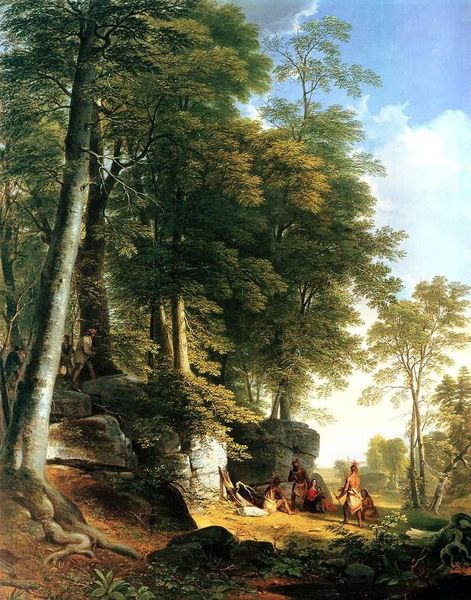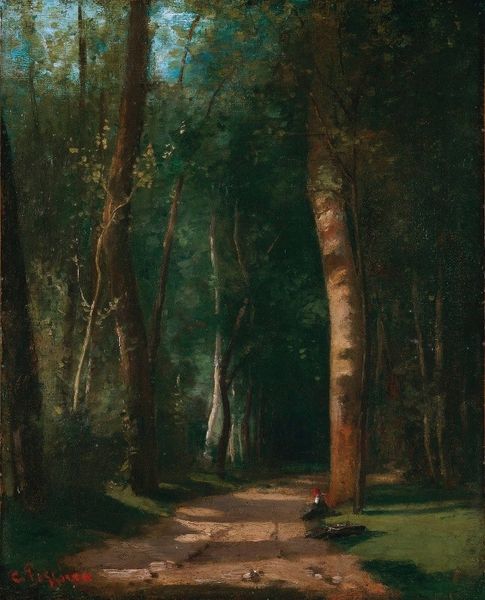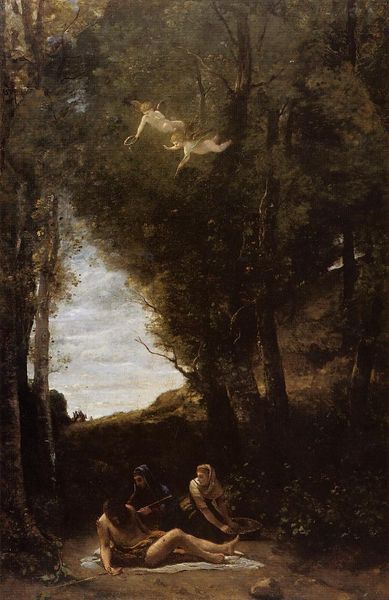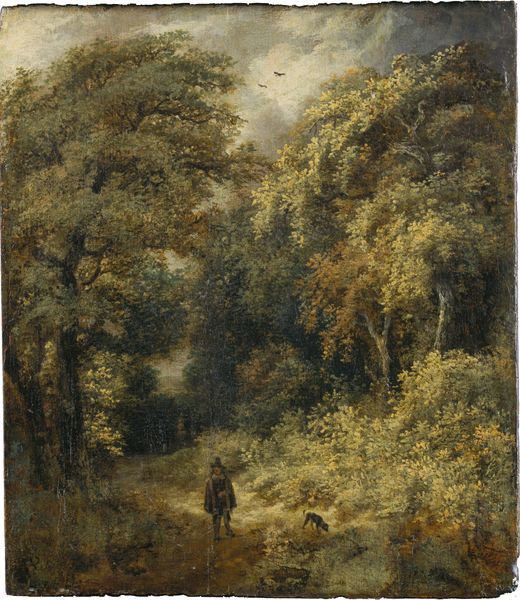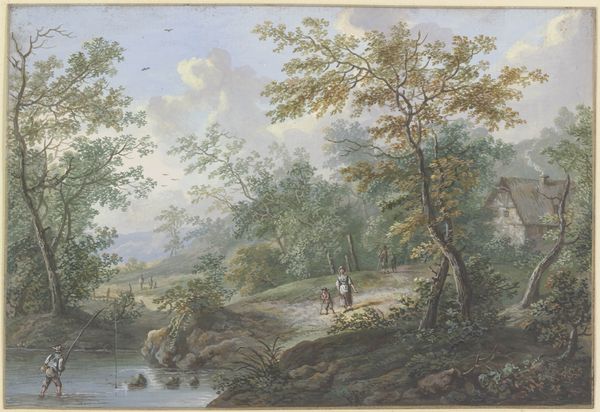
painting
#
narrative-art
#
painting
#
landscape
#
figuration
#
romanticism
#
academic-art
Copyright: Public Domain: Artvee
Christoffer Wilhelm Eckersberg painted "The Devil’s Cleft at Liselund Manor" offering us a glimpse into early 19th-century Danish society. Eckersberg, often called the father of Danish painting, captures a moment that subtly reflects the era's complex social fabric. The figures, elegantly dressed, are set against a Romantic backdrop, a nod to the period’s fascination with nature and the sublime. The woman holding the book may suggest the rising importance of female education and cultural literacy in bourgeois circles. Simultaneously, the presence of the 'Devil’s Cleft' hints at the underlying tensions between enlightenment and the more irrational, mysterious elements of human existence. Eckersberg seems to be inviting us to consider how culture and class intersect with our understanding of nature. How do we, like these figures, project our human narratives onto the landscape? It's a moment of quiet contemplation, urging us to reflect on our place within the world.
Comments
No comments
Be the first to comment and join the conversation on the ultimate creative platform.
